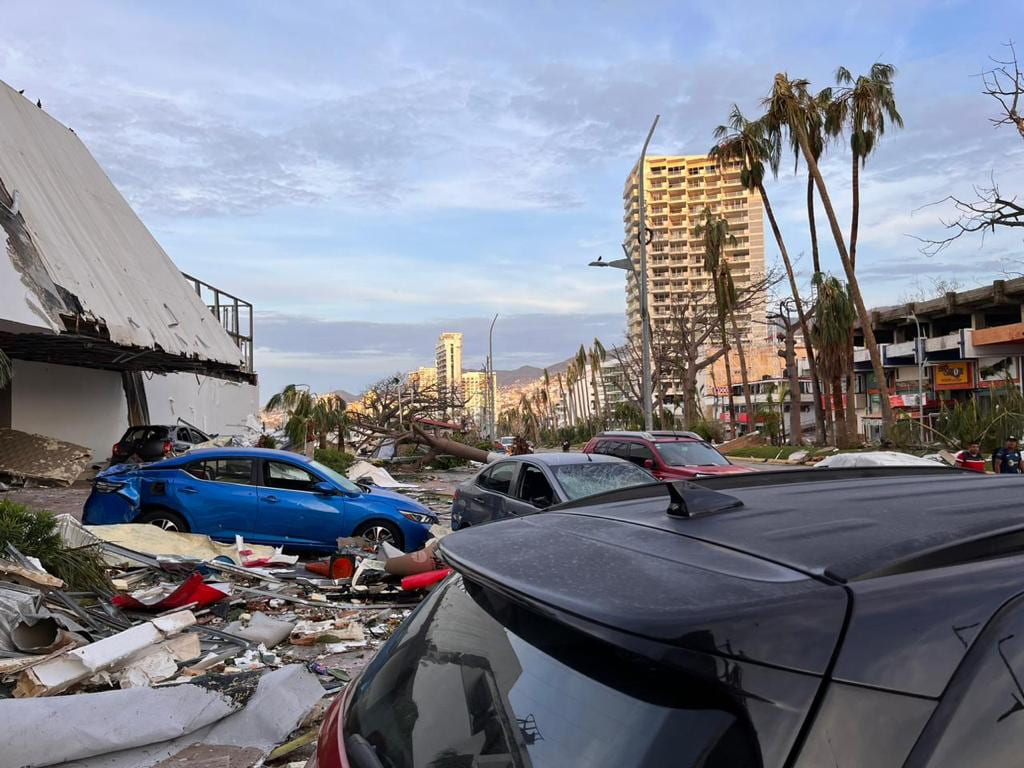From when we are born until we die most of our daily activities are controlled by different norms, such as civil registration, house buying/letting, mortgages, work contracts, inheritances. We know that if we do not respect the law we will be faced with criminal or civil penalties. Hence, we act accordingly. Could you imagine a real, rather than an ideal, society without laws? Despite the importance of laws and regulations, experts and organisations without a legal background do not usually think about them in the context of Disaster Risk Reduction (DRR). In my experience, they usually tend to hide from laws and regulations. They simply pay attention to technical standards and guidelines.
Environmental legislation usually involves the legal framework for mitigating natural hazards through sectoral legislation in areas such as land, water and coastal management, civil protection or public works and the provision of housing. Legislation could regulate the uncontrolled growth of cities through a land act, which it is usually something that governs the different tools for land use planning. In hazard-prone areas, prohibitions, restrictions, or recommendations could be used. Environmental legislation deals with strategic environmental assessments, which evaluate the plans (for instance, a flood risk management plan or local hazard regulation plans). Meanwhile, a civil protection act regulates different disaster risk reduction actions to be taken before, during and after a potential or actual harmful event. Compulsory building codes or antiseismic norms also contribute to the mitigation of disasters. Legislation establishes a network of procedures and mechanisms for cooperation and collaboration among different institutions so that disaster risk management is gradually adopted through laws and regulations, as is the case in some countries.[1]
Non-structural measures such as legislation and land use planning are some of the most cost-effective DRR tools. They can mitigate or minimise, or even avoid, socio-economic losses related to natural hazards before destructive events happen. Unfortunately, civil protection is usually focused on short-term horizons during and after disaster instead of becoming a cornerstone of long-term actions before the disaster in the fields of prevention and prediction. “It is better to be safe than sorry”, but politicians or planners engaged in disaster risk management (DRM) probably prefer a “safe bet” by spending money in the short term in early warning, response and recovery of a real disaster instead of “wasting money” in prevention and mitigation of future adverse events. Local governments are usually more concerned about making money through construction permissions than in ensuring safety. DRM fails if risk reduction legislation is not enacted and enforced.
Does smart legislation ensure better DRR?
Not necessarily: compliance with laws and regulations is usually low. Although DRR mechanisms may be treated as compulsory in some national or local systems, institutions tend not to enforce them. For instance, flood hazard and risk maps have been established by EU countries after the enactment of Directive 2007/60/EC on the assessment and management of flood risks. Such maps should be considered in local planning, but local authorities do not usually use them to establish land use in relation to the level of hazard, even when flood hazard and risk maps are freely available.
In Spain, according to civil protection legislation, local emergency plans that focus on earthquake, flood and volcanic hazards have been compulsory since the 1990s. However, most municipalities still have no civil protection plans. The Lorca earthquake of 2011 killed nine people, but the earthquake hazard map was blamed instead of the lack of compliance with the seismic building code. The La Palma eruption of 2021 affected more than 1500 houses, but the volcano was treated as the only guilty party, even though some houses were built too close to the ravines in which the lava flowed. For public administrations it is easier to blame scientists or practitioners than recognise their own faults.
In the last century, some natural disasters were considered to be “acts of God”. Currently, climate change is blamed. The authorities are not assuming their own responsibilities and thus, when disaster strikes, all citizens pay for their lack of responsibility.
Barriers to DRR legislation
When dealing with DRR, it is not easy to find the right mix of legislation. Scattered sectoral legislation tends to become lost in this complex legal labyrinth. Conflicts of competency and jurisdiction are particularly common in countries with decentralised administrations. In many cases, methodologies and return periods for hazard and risk maps have not usually been established using appropriate technical standards and guidelines. Unfortunately, cooperation and coordination among different stakeholders do not have a history of effective achievements.
While the legislation is the means, planning is the outcome. Even the presence of compulsory laws and regulations does not guarantee that land use and hazard maps will be effective. Lack of instruments to systematically monitor compliance with legislation, for instance in urban planning, means that it is difficult to assess the proportion of local plans that fail to respect the law. Hazard-prone areas should be classified as rural land instead of developable land, or at least some land uses should be avoided, or some restrictions or recommendations should be considered according to the level of hazard. However, it is difficult to tell whether planning institutions really proceed according to the law. On the other hand, hazard maps to be expressly used for zoning should be created by means of the economic resources of governmental institutions (and probably at a small scale). However, they tend to be created using private resources and at larger scales. In the first instance, DRR legislation is mainly designed to be enforced by public administrations, but prevention is usually transferred to individual stakeholders.
Natural hazards maps are not cheap to make or easy to create. Hence, shortage of economic funds and a deficit of well-prepared human resources constitute more barriers to DRR. However, in my opinion, the lack of accountability of decision makers is the most important barrier. In their own businesses they probably employ a precautionary approach (much as environmental legislation does), but they avoid it in public affairs.
Incompatibility of different land-use planning systems and tools is something that adds difficulties to disaster risk management.
Legislation and the Sendai Framework for DRR
The importance of legislation was underlined in the Hyogo Framework for Action, which focused on the enactment of dedicated DRM laws. The Sendai Framework goes further by promoting the coherence of the entire national legal and policy framework.[2]
All priorities for action (PFAs) of the Sendai Framework for DRR need to be rooted in legislation. In particular, to achieve PFA 2 at the national and local levels, it is important to integrate DRR into national and local frameworks of laws, regulations and public policies by developing new laws or amending existing legislation. There is a need to allocate necessary resources and establish mechanisms to ensure compliance. On the other hand, land-use planning has been considered as a vital means to achieve PFA 2 (from local to global levels) and PFA 3 (at national and local levels).
References to different relationships among policies, strategies and plans can be found throughout the Sendai Framework for DRR. They should lead to normative tools.
References
- Garrido, J. and Saunders, W.S.A. (2019). Disaster Risk Reduction and Land Use Planning: Opportunities to Improve Practice. In: Shakoor, A., Cato, K. (eds) IAEG/AEG Annual Meeting Proceedings, San Francisco, California, 2018 – Volume 5. Springer, Cham. https://doi.org/10.1007/978-3-319-93136-4_20. ⏎
- IFRC and UNDP (2015). Handbook on Law and Disaster Risk Reduction. International Federation of Red Cross and Red Crescent Societies and United Nations Development Programme: Geneva, Switzerland. p 76. ⏎
Acknowledgments
I gratefully acknowledge discussions with Prof. David Alexander. Thanks for his kind and helpful revision.
Jesús Garrido Manrique is a visiting researcher at IRDR, analysing the application of legislation in urban planning for disaster risk reduction. He is a Lecturer in the Department of Civil Engineering at the University of Granada, Spain, and is the Head of World Geologist NGO (Andalusia Branch), working in DRR and water supply projects in Central America.

 Close
Close











